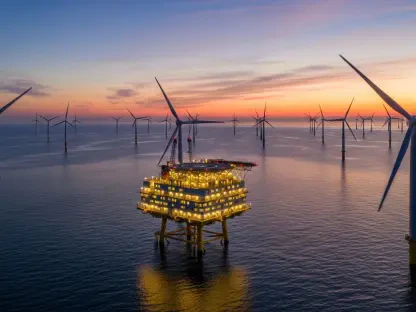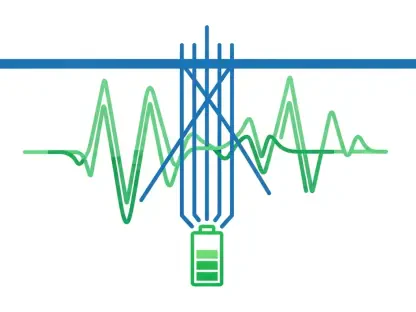In a stunning turn of events, a federal judge has breathed new life into the Revolution Wind project, a massive 704MW offshore wind farm nearing completion off the coasts of Rhode Island and Connecticut, designed to power approximately 350,000 homes. This ambitious initiative faced a severe setback when a stop-work order from the US Bureau of Ocean Energy Management (BOEM) halted construction at a critical stage. With a $5 billion investment on the line and 80% of the project already built, the abrupt interruption sparked outrage among developers and state officials alike. The legal battle that ensued not only challenged the authority behind the order but also underscored the broader stakes for renewable energy in the United States. A pivotal court ruling has now shifted the trajectory, allowing work to resume and setting a precedent for future projects. This development raises critical questions about governmental oversight, economic impacts, and the urgent push for clean energy solutions in a rapidly changing landscape.
A Sudden Halt and Its Fallout
The Revolution Wind project, a joint venture between Denmark’s Ørsted and a consortium led by Skyborn Renewables, was progressing steadily until BOEM issued a stop-work order citing vague national security and marine use concerns. At the time of the interruption, key components such as offshore foundations, nearly half of the planned 65 turbines, and critical export cables were already in place. The sudden halt inflicted severe financial strain, with Ørsted estimating weekly losses of around $15.7 million. Beyond the monetary toll, the decision threatened to derail a project poised to deliver substantial environmental benefits by reducing reliance on fossil fuels. Developers quickly mobilized, filing a legal challenge in the US District Court for the District of Columbia, arguing that the order lacked legal grounding and ignored prior federal approvals. This move set the stage for a high-stakes confrontation between private investment and governmental authority, with the future of renewable energy hanging in the balance.
The economic and social ramifications of the stop-work order extended far beyond the developers’ balance sheets. States like Rhode Island and Connecticut, which stood to gain from lower energy costs and job creation, expressed deep concern over the potential collapse of such a significant initiative. The project’s advanced stage made the interruption particularly jarring, as years of planning and billions in investment risked being squandered over ambiguous justifications. Legal experts noted that the lack of clear evidence or specific legal violations cited by BOEM weakened the government’s position from the outset. Meanwhile, the broader clean energy sector watched closely, recognizing that the outcome could influence investor confidence in similar ventures. As tensions mounted, the focus shifted to the courtroom, where a federal judge would ultimately determine whether the project could overcome this bureaucratic roadblock and resume its path toward completion.
Judicial Intervention Turns the Tide
In a decisive moment, US District Judge Royce Lamberth granted a preliminary injunction against the stop-work order, delivering a sharp rebuke to the administration’s rationale. During an intense two-hour hearing, the judge described the government’s actions as “the height of arbitrary and capricious,” highlighting a glaring absence of due process in revoking prior assurances. This ruling allowed construction on Revolution Wind to resume immediately, averting further financial hemorrhage and preserving the project’s timeline for powering hundreds of thousands of homes. Judge Lamberth’s critique focused on the contradictory nature of the justifications provided, warning that continued delays could cause irreparable harm to the developers. This legal victory not only provided immediate relief but also sent a powerful message about the importance of procedural fairness in governmental decisions impacting major infrastructure projects.
Parallel to the developers’ lawsuit, the states of Connecticut and Rhode Island mounted their own legal challenge against BOEM and the Department of the Interior. Their arguments echoed those of the private sector, emphasizing the lack of statutory support or concrete evidence behind the stop-work order. Connecticut Attorney General William Tong celebrated the injunction as a significant triumph for workers and families, stressing the urgency of completing the wind farm to address soaring energy costs. The states’ involvement underscored a rare unity between public and private entities in defending a shared vision for sustainable energy. This dual legal front amplified the pressure on federal authorities, revealing widespread frustration with what was perceived as an erratic and unjustified intervention. As construction crews returned to work, the collaborative pushback illustrated a growing resolve to protect renewable energy initiatives from political whims that could undermine long-term environmental goals.
Implications for Renewable Energy’s Future
The reinstatement of Revolution Wind marks a critical milestone for offshore wind development in the United States, offering hope for meeting ambitious clean energy targets. The judicial condemnation of the stop-work order as lacking merit sets a precedent that could deter similar governmental overreach in the future. For developers and investors, this outcome reaffirms the importance of legal recourse in safeguarding substantial investments against unpredictable policy shifts. Moreover, the project’s resumption highlights the economic benefits at stake, from job creation to reduced energy expenses for consumers in the region. As the wind farm nears completion, its success could inspire further innovation and funding in the sector, reinforcing the nation’s commitment to transitioning away from fossil fuels and embracing sustainable alternatives in the energy landscape.
Looking back, the legal battle over Revolution Wind revealed the fragility of large-scale renewable projects in the face of political turbulence. The unified response from developers, state governments, and the judiciary demonstrated a collective determination to prioritize environmental and economic progress over bureaucratic hurdles. Moving forward, stakeholders must advocate for clearer regulatory frameworks to prevent such disruptions, ensuring that future initiatives are shielded from arbitrary interventions. Establishing robust guidelines and fostering dialogue between federal agencies and private entities could pave the way for smoother project execution. Additionally, this case serves as a reminder of the judiciary’s role in upholding fairness, offering a blueprint for challenging unfounded governmental actions. As the clean energy sector continues to grow, the lessons learned from this ordeal will undoubtedly shape policies and inspire resilience against unforeseen challenges.









